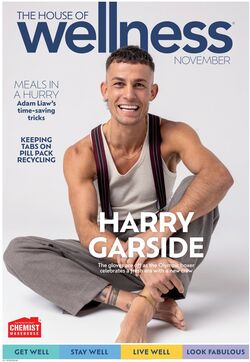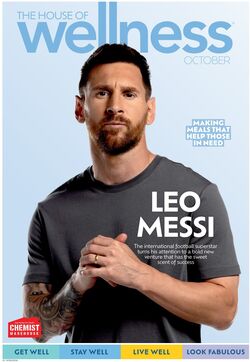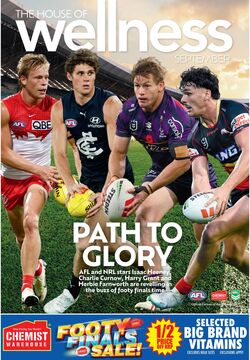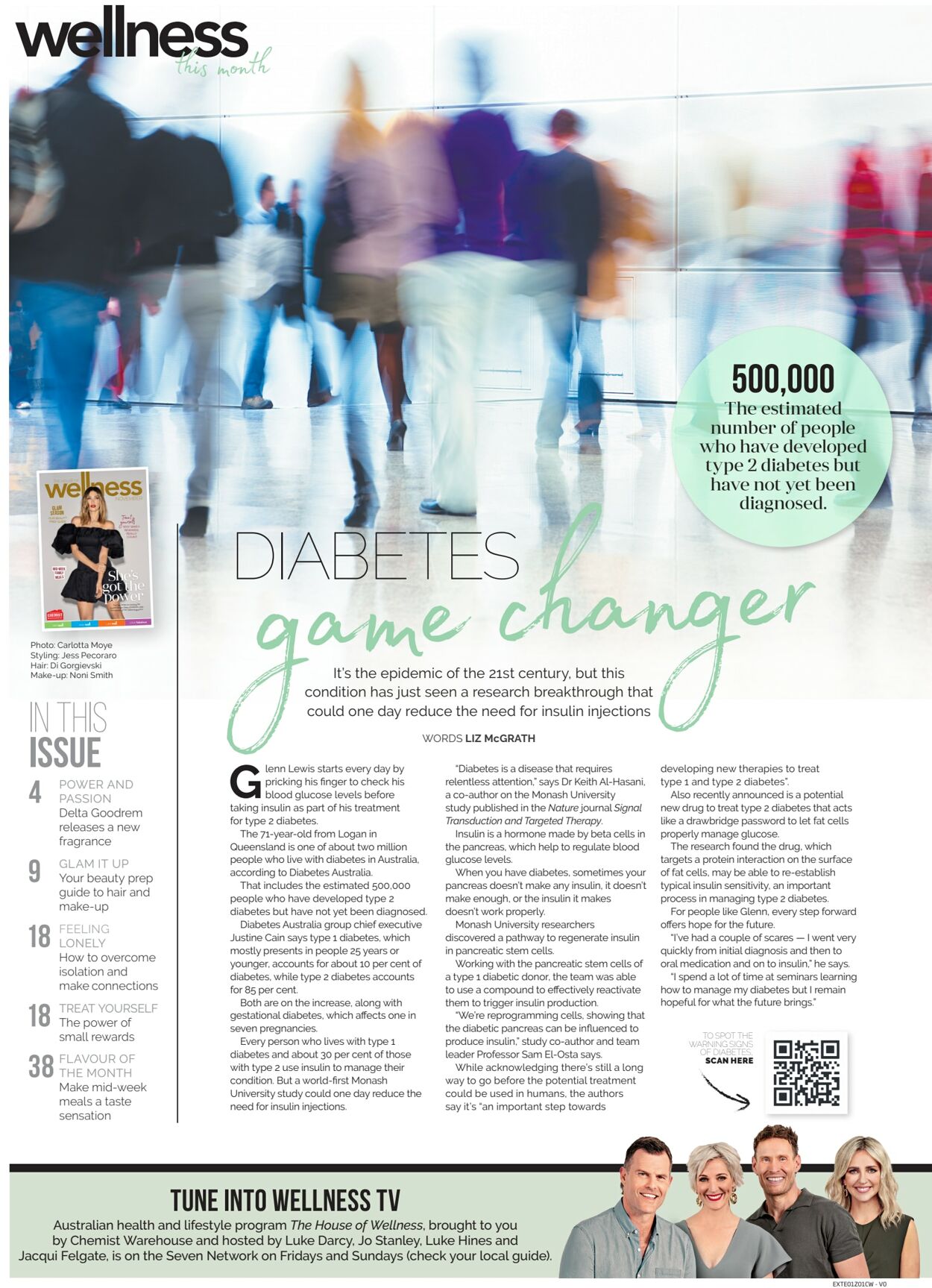













Products in this catalogue
Photo: Carlotta Moye Styling: Jess Pecoraro Halt: Di Gorgievski Make-up: Noni Smith IN THIS ISSUE 4 rues Delta Goodrem releases a new fragrance 9 Your beauty prep guide to hair and make-up 18 coven How to overcome isolation and make connections 1 8 The power of small rewards 38 Fie 0 Make mid-week meals a taste sensation TUNE INTO WELLNESS TV Australian health and lifestyle program The House of Wellness, brought to you by Chemist Warehouse and hosted by Luke Darcy, Jo Stanley, Luke Hines and Jacqui Felgate, is on the Seven Network on Fridays and Sundays (check your local guide). It's the epidemic of the 21st century, but this condition has just seen a research breakthrough that # could one day reduce the need for insulin injections tenn Lewis starts every day by G pricking his finger to check his blood glucose levels before taking insulin as part of his treatment for type 2 diabetes, The 71-year-old from Logan in Queensland is one of about two million people who live with diabetes in Australia, according to Diabetes Australia That includes the estimated 500,000 people who have developed type 2 diabetes but have not yet been diagnosed. Diabetes Australia group chief executive Justine Cain says type 1 diabetes, which mostly presents in people 25 years or younger. accounts for about 10 per cent of diabetes, while type 2 diabetes accounts for 85 per cent. Both are on the increase, along with gestational diabetes, which affects one in seven pregnancies. Every person who lives with type 1 diabetes and about 30 per cent of those with type 2 use insulin to manage their condition. But a world-first Monash University study could one day reduce the need for insulin injections. ¥ WORDS LIZ McGRATH “Diabetes is a disease that requires relentless attention” says Dr Keith Al-Hasani co-author on the Monash University study published in the Nature journal Signal Transduction and Targeted Therapy. Insulin is a hormone made by beta cells in the pancreas, which help to regulate blood glucose levels. When you have diabetes, sometimes your pancreas doesn't make any insulin, it doesn't make enough, or the insulin it makes doesn't work properly. Monash University researchers discovered a pathway to regenerate insulin in pancreatic stem cells. Working with the pancreatic stem cells of a type 1 diabetic donor, the team was able to.use a compound to effectively reactivate them to trigger insulin production “We're reprogramming cells, showing that the diabetic pancreas can be influenced to produce insulin’ study co-author and team leader Professor Sam El-Osta says While acknowledging there's still a long way to go before the potential treatment could be used in humans. the authors say it's ‘an important step towards U 900,000 a _ Theestimated__ number of people who have developed type 2 diabetes but have not yet been diagnosed. er developing new therapies to treat type 1 and type 2 diabetes’. Also recently announced is a potential new drug to treat type 2 diabetes that acts like a drawbridge password to let fat cells properly manage glucose. The research found the drug, which targets a protein interaction on the surface of fat cells. may be able to re-establish typical insulin sensitivity, an important process in managing type 2 diabetes. For people like Glenn, every step forward offers hope for the future. “Ive had a couple of scares — I went very quickly from initial diagnosis and then to. ‘oral medication and on to insulin” he says. “spend a lot of time at seminars learning how to manage my diabetes but | remain hopeful for what the future brings”
| Name | Details |
|---|